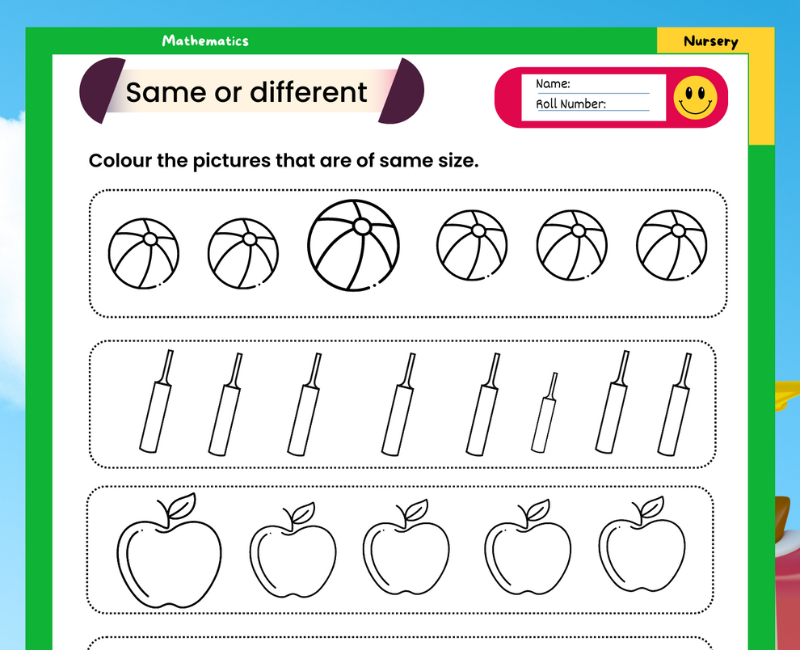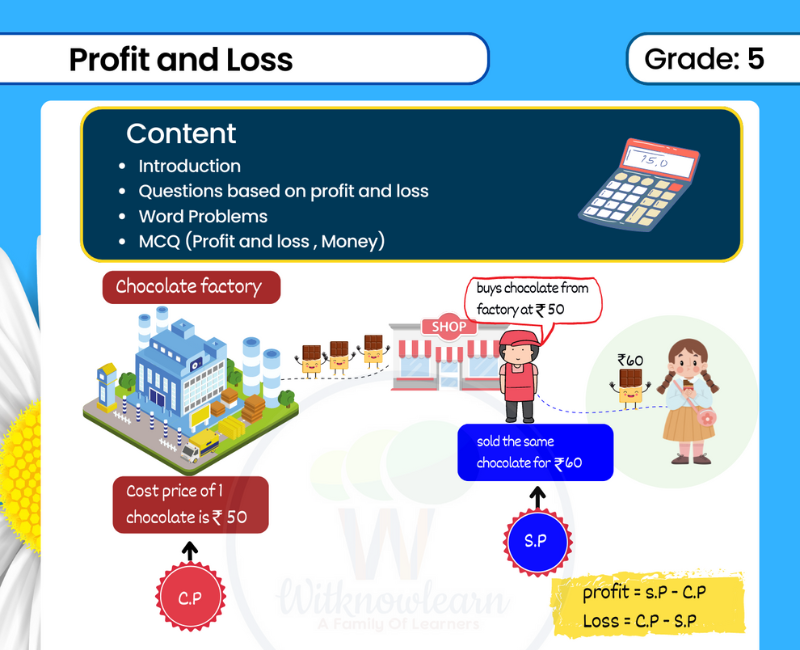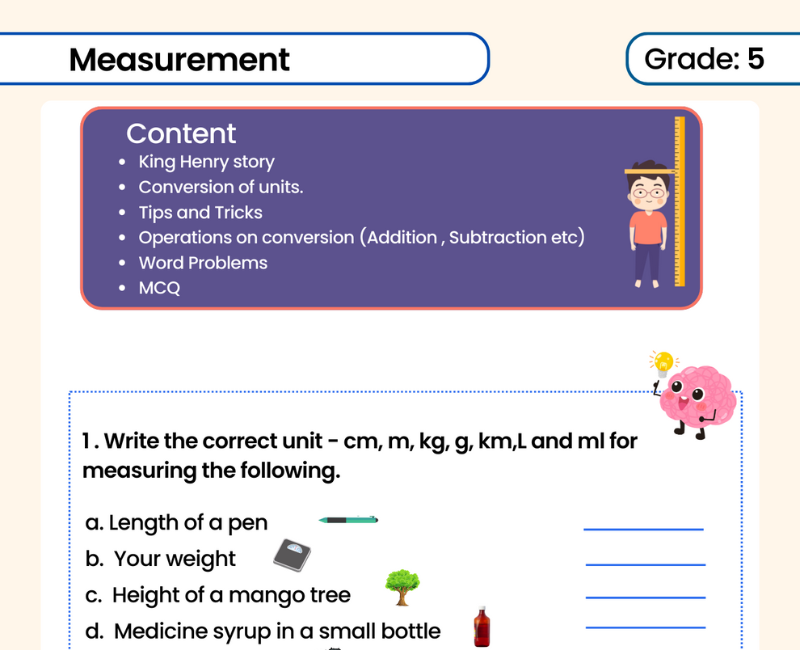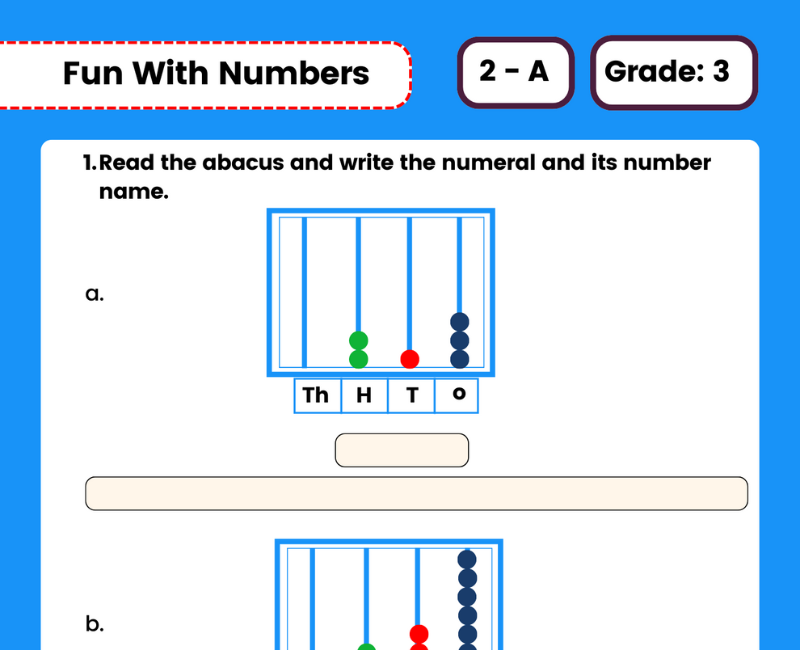Boost Your Child's Pre-Mathematical Skills with More or Less Worksheets for Nursery Champs
Teach your little ones the concept of comparison with our more or less worksheets for nursery. This collection is designed to provide engaging and fun learning experiences. Children find these more or less worksheet for nursery activities entertaining and educational, making them an ideal teaching tool. They help develop critical thinking skills and enhance their number sense. With vibrant graphics and simple instructions, our worksheets make learning about 'more' and 'less' an enjoyable experience for your little ones. So, why wait? Explore our range of more or less worksheets for nursery and kick-start your child's learning journey.
Why understanding
more or less concept is important
Understanding the concepts of "more" and
"less" is important for children as it helps them develop
mathematical and quantitative reasoning skills. It helps children to understand
and compare quantities, and to make decisions based on those comparisons. For
example, it allows them to understand the difference between having enough or
not enough, or to be able to decide how much of something they need. It also
helps them understand the concept of addition and subtraction, which are
fundamental mathematical operations. In addition, understanding the concept of
more and less can help children in their everyday life, for example, in
measuring and pouring liquids, counting money and making change, or
understanding the relative size of objects or distances. It also helps children
to understand the concept of value, priority, and fairness.
more and less concept
for nursery
When teaching
"more" concepts in a nursery or preschool setting, the focus is often
on exposing children to a wide range of experiences and ideas in order to
foster their curiosity and interest in learning. This might include activities
such as reading books, playing with toys and games, and exploring the natural
world. The goal is to give children a broad foundation of knowledge and skills
that they can build on as they get older.
On the other hand, teaching "less" concepts in a nursery or preschool setting may involve focusing on a smaller set of core concepts and skills that are considered essential for children's development. This might include activities such as learning to count, recognizing basic shapes and colors, and developing fine motor skills through activities such as colouring and cutting with scissors. The goal is to help children master these foundational concepts and skills before moving on to more complex topics. Few activities to learn about more and less.
Introduce the fascinating world of numbers to your child using our comprehensive collection of more or less worksheets. Our more and less worksheets are specifically designed to make learning fun, engaging, and interactive for young learners. These worksheets are the perfect tools to enhance children's understanding of the concepts of more and less, greater than and less than.
The more less worksheets we offer come with a variety of activities that help children practice and reinforce their understanding of these fundamental concepts. Our greater than less than worksheets are an essential tool for your child’s early mathematical education, providing them with the foundation they need for more complex math skills.
With our kindergarten greater than less than worksheets, children can practice this concept in a variety of ways. From comparing numbers to objects, these worksheets offer a versatile learning experience. Our more or less worksheet collection is not just limited to numbers. We also provide more or less worksheets that deal with understanding quantities, which is an important skill for kindergarten students.
Our more or less number worksheets are a great resource for kids who are just starting to learn about numbers. These worksheets present a visual representation of numbers, making it easier for children to understand the concept of more and less. Our more than less than worksheets, on the other hand, are perfect for kids who are ready for a slightly more advanced concept.
We understand the importance of providing quality resources to parents and educators, which is why we offer a free printable greater than less than worksheets. These worksheets are easily accessible and can be printed at your convenience. Our less and more worksheet collection includes a variety of activities that are sure to keep your child engaged and entertained.
For more advanced learners, our greater than less than equal to worksheets provide an excellent challenge. These worksheets will help your child understand the concept of equality and how it relates to the more or less symbols.
We know that every child learns at their own pace, which is why we also provide a more or less worksheets for kindergarten pdf. This allows you to download and print the worksheets, giving your child the opportunity to practice at their own pace.
For our friends in the UK, we have specially designed greater than less than worksheets for UKG. These worksheets align with the UK curriculum, ensuring your child is learning according to their educational standards.
The more or less worksheet collection is an essential tool for any parent or educator. With vibrant images and engaging activities, your child will have a blast while learning. The less or more worksheet collection is perfect for children who are visual learners.
The more or less meaning is a critical concept for children to understand. It helps them comprehend the world around them and is a crucial part of their mathematical education. The more or less meaning in Hindi and more or less meaning in Malayalam are also available, catering to a diverse range of learners.
We also offer more or less worksheets for nursery students. These worksheets are designed with young learners in mind, featuring bright colors and simple activities that make learning fun. The more or less activities for kindergarten and the symbol for more or less are all incorporated into these worksheets, ensuring your child gets a comprehensive learning experience.
In addition to the worksheets, we also provide a more or less game. This game is a fun way for children to practice their skills and solidify their understanding of the concept. The more or less pictures included in the game and worksheets make the learning process even more engaging for young learners.
With our more or less numbers worksheets, children can practice comparing numbers in a fun and interactive way. Whether it’s more or less worksheet for nursery or more or less worksheets for kindergarten pdf, we have you covered. So, delve into our extensive collection of worksheets and kick-start your child's learning journey today!





